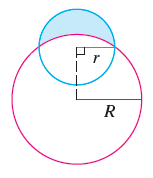This page contains problems similar to those that will appear on the
Unit II Exam.
These questions are all similar to ones that you encountered while doing
your WebAssign homework.
|
a.) |
\(\displaystyle \int x^2e^{2x}\,dx\)
|
|
h.) |
\(\displaystyle \int_0^\pi e^{\cos t} \sin(2 t)\, dt \)
|
|
b.) |
\(\displaystyle \int \arccos(x) \,dx\)
|
|
i.) |
\(\displaystyle \int \tan^3\theta \sec^6\theta\, d\theta \)
|
|
c.) |
\(\displaystyle \int \ln(\sqrt{x}) \,dx\)
|
|
j.) |
\(\displaystyle \int \sin^2 x\cos^2 x\, dx \)
|
|
d.) |
\(\displaystyle \int e^\theta\sin\theta\, d\theta \)
|
|
k.) |
\(\displaystyle \int \frac{x^2}{\sqrt{81 - x^2}} \, dx \)
|
|
e.) |
\(\displaystyle \int_0^{2\pi} t\sin(t)\cos(t)\, dt\)
|
|
l.) |
\(\displaystyle \int_0^7 \sqrt{x^2 + 49}\, dx \)
|
|
f.) |
\(\displaystyle \int \frac{z}{\sqrt{z^2 - 9}} \, dz\)
|
|
m.) |
\(\displaystyle \int \frac{7t - 5}{t + 5} \, dt\)
|
|
g.) |
\(\displaystyle \int \frac{17}{(x - 1)(x + 1)^2}\, dx\)
|
|
n.) |
\(\displaystyle \int \frac{25}{v^3 - 8} \,dv\)
|
Your use of Wichita State University content and this material is subject to our
Creative Common License.
